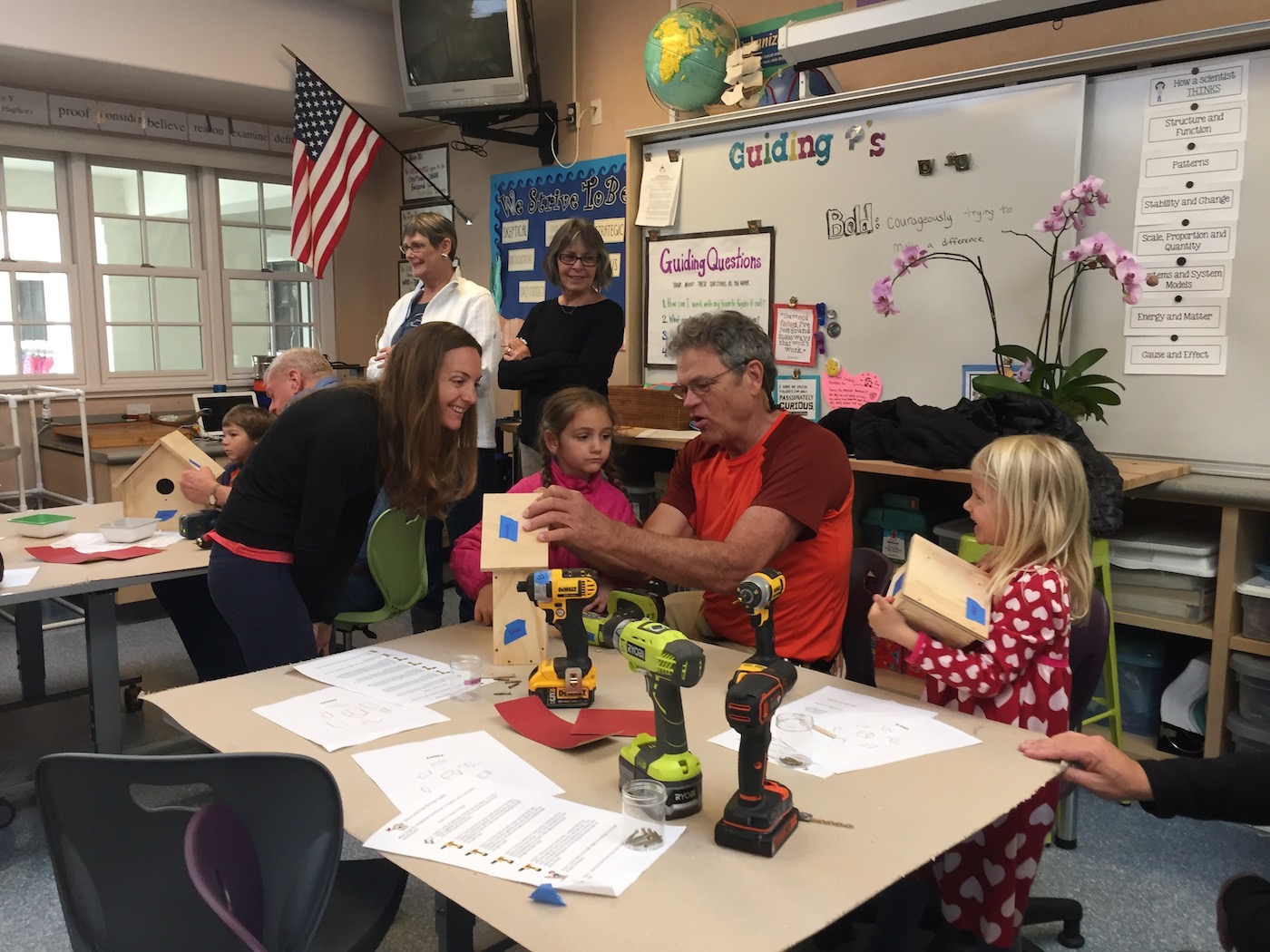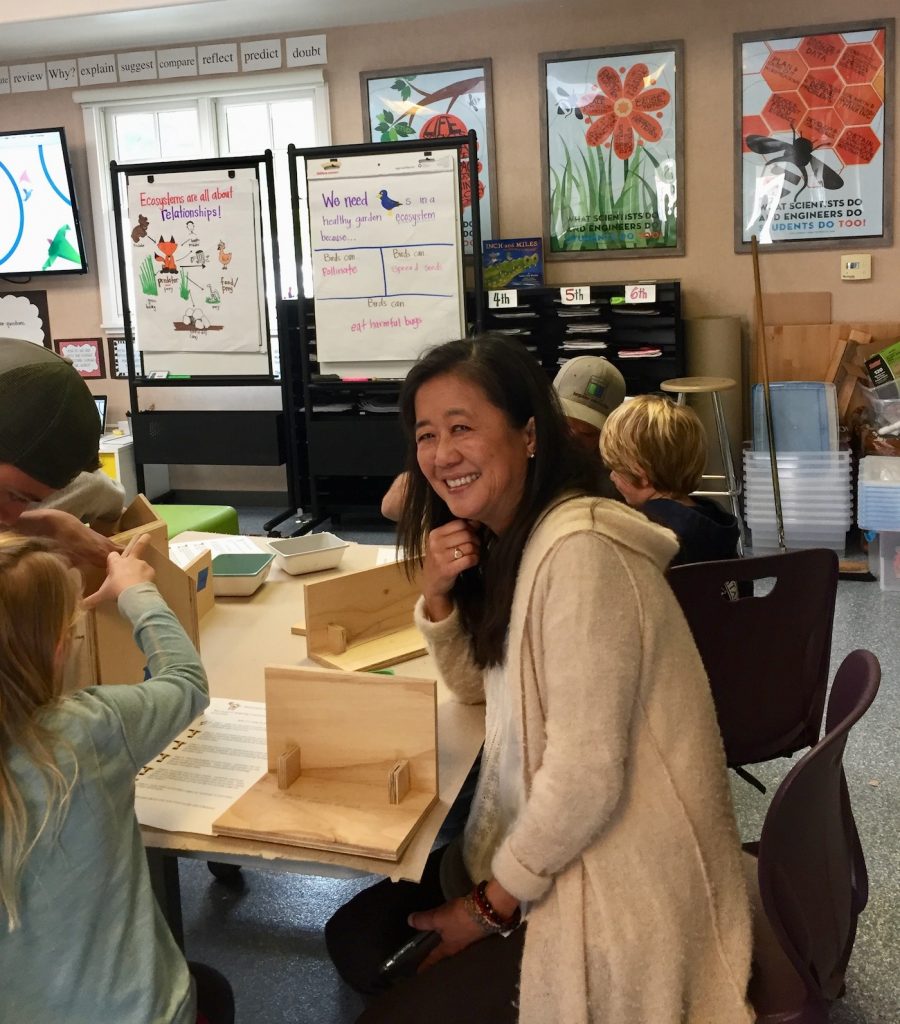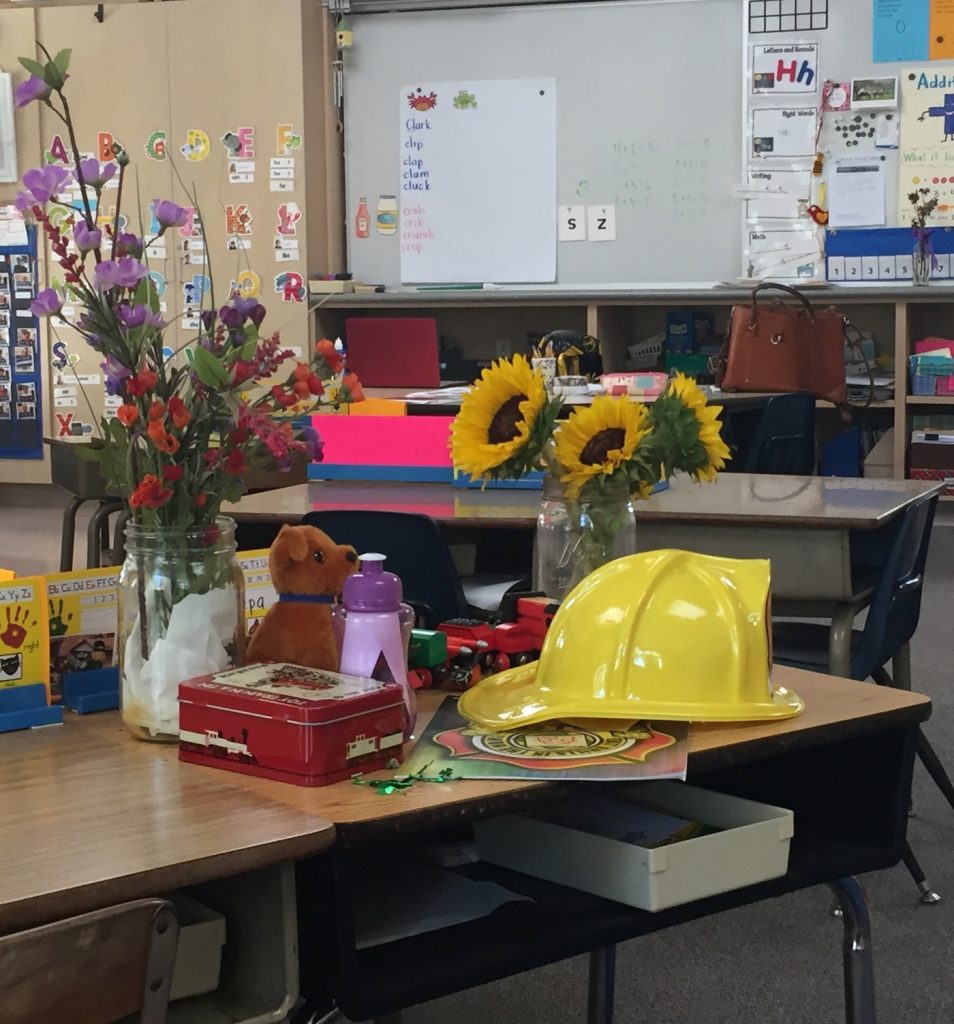Kindergarten Bird House Project

It seems spring is in the air. Hopefully, this is a sign that this year’s unpredictable, chaotic winter will have waved goodbye to us forever. The hard work continues unabated, and slowly Montecito is finding its footing once again – and our community’s schools are no exception. I recently drove to Cold Spring School to visit and to catch up with supervisor-principal Amy Alzina to find out how she, her students, and their parents have coped.
Amy – iPhone in hand – greeted me with a big smile and we landed in the kindergarten classroom of Lisa Ishikawa. We were greeted by a birdhouse construction project fully underway, the sounds of pounding hammers, electric screwdrivers, and enthusiastic chatter bounced about the classroom. The kindergarteners accompanied by an assortment of parents and grandparents were fully engaged. Each child was working on his or her own birdhouse: self-researched, meticulously planned, and now under construction (with the help of equally committed and enthusiastic parents).

“We’ve been planning our ‘Build Day’ for quite some time and families were invited to join us,” Ms. Ishikawa explained. “The birdhouse is a part of our curriculum, a hands-on project designed to create something that blends in with our environment and incorporates all of the elements of the STEAM program.”
Jean Gradias, Cold Spring science teacher who overseas the STEAM (Science Technology Engineering Art Math) program of integrative studies, added, “Constructing their birdhouses today is the result of a lengthy multidisciplinary process with which these kids have been involved. And it’s planned to be a totally immersive experience for each individual child, as you can see.”
Lisa explained how the process worked. “Our STEAM project has been a collaborative teaching venture with Jean’s guidance, beginning in the STEAM room. The actual birdhouse building process took about six weeks.” Both Lisa and Jean were involved in teaching the science and math portion; understanding how all things in the environment are related and to assist in developing an environmentally friendly project.
Jean’s architect husband introduced the technology aspect; creating two diagrams of a birdhouse, one from the air (plan view) and the other from the front (elevation view). As engineers, the children then developed their own model after which the materials were pre-cut for them according to their individual plans. The art portion of the project, painting the birdhouses, completed the unit.
“I’m one lucky person to have landed at Cold Spring School and in a profession that is my passion,” Lisa exclaims. Her words resonated as she talked about her early years teaching in the Los Angeles Unified School District. Lisa further explained that although she loved teaching, she no longer wanted to live in Los Angeles and longed to go back to Santa Barbara County were she was born. “I actually got a taste of it for a while attending UCSB, so when the time came I took a leap of faith and decided to move back to Santa Barbara and take whatever teaching job I could get.” Lisa’s first job in the Santa Barbara area was at La Patera School as a computer teacher for one year, during which she applied for a credentialed job at Cold Spring School.
“Going to the interview, I got lost,” she laughs, “but when I finally arrived, I was stunned at how beautiful the campus was. I fell in love with the atmosphere of the school and everything I saw, but believed I was just another interview and that there’d be no chance for me. To my surprise,” she recalls, “they called the next day and offered me the position…” Lisa is now in her 24th year at Cold Spring School and has become one of the school’s most valued and devoted staff members.
A fourth-generation Californian, Lisa was born in Lompoc but lived most of her life in Pasadena near her grandparents and family members. Her grandparents had a flower farm and a business in Riverside but, as was the case with most Japanese-Americans living near the coastal areas during World War II, her grandparents were forced to relocate to internment camps and detention centers. Her grandmother’s family was sent to Manzanar in the central California valley, made famous by Ansel Adams in his photographic essay now in the National Archives, and her grandfather’s family to Gila River, Arizona.
Lisa recalls, “I knew my grandparents and parents had hardships during their lives. However, my parents worked hard so that I could have the good life I’ve had. And thanks to them, my son is the benefactor of all of the struggles and efforts of the previous generations. I am grateful for what they created for us.”
Remembering Pasta

The tragedy experienced by the Montecito community on January 9 came close to Lisa and the children in her kindergarten class. “In all my years of teaching, this is something I never imaged I would experience… to lose a kindergarten student in such a tragic manner. It was hard not only for our class but for the entire Cold Spring community. That such a kind, bright, well-liked kid like Pasta (Sutthithepa) would be swept away in the disastrous mudslides is almost unfathomable. I still can’t get my mind around that today.”
His classmates have also not forgotten little Pasta. His desk in their classroom remains unoccupied. On its surface, the children continue to place objects representing the things they are studying so that he may be included in all they do. Amy made sure that Lisa’s kindergarten class, as well as the entire school community, was assisted during this difficult time with a variety of support services as long as they were needed.
As I made my way into the parking lot, I passed Amy at the gate as she was waving goodbye to her students. I thanked her for the opportunity to participate in this special day and to meet Lisa and her kindergarten class, with the bonus of seeing Jean again, Cold Spring’s innovative science teacher. Thinking of it now, even after writing all these words, I’m still impressed at what is being taught in our schools – and all of it in kindergarten!





